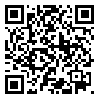Volume 11, Issue 3 (9-2017)
payavard 2017, 11(3): 297-307 |
Back to browse issues page
Download citation:
BibTeX | RIS | EndNote | Medlars | ProCite | Reference Manager | RefWorks
Send citation to:



BibTeX | RIS | EndNote | Medlars | ProCite | Reference Manager | RefWorks
Send citation to:
Emamgholipour S, Akbari Sari A, Geravandi S, Mazrae H. Estimation of Out-of-Pocket and Catastrophic Expenditures among Patients with Cardiovascular Diseases in Khuzestan. payavard 2017; 11 (3) :297-307
URL: http://payavard.tums.ac.ir/article-1-6289-en.html
URL: http://payavard.tums.ac.ir/article-1-6289-en.html
1- Associate Professor, Health Management and Economics Department, School of Public Health, Tehran University of Medical Sciences, Tehran, Iran
2- Professor, Health Management and Economics Department, School of Public Health, Tehran University of Medical Sciences, Tehran, Iran
3- Master of Sciences Student in Health Economics, School of Public Health, Tehran University of Medical Sciences, Tehran, Iran ,Hourageravandi@gmail.com
4- Bachelor of Science in Occupational Health Engineering, School of Public Health, Ahvaz Jundishapur University of Medical Sciences, Ahvaz, Iran
2- Professor, Health Management and Economics Department, School of Public Health, Tehran University of Medical Sciences, Tehran, Iran
3- Master of Sciences Student in Health Economics, School of Public Health, Tehran University of Medical Sciences, Tehran, Iran ,
4- Bachelor of Science in Occupational Health Engineering, School of Public Health, Ahvaz Jundishapur University of Medical Sciences, Ahvaz, Iran
Abstract: (4566 Views)
Background and Aim: The World Health Organization (WHO) has placed special emphasis on the protection of families against the costs of health services. Patients suffer not only from the burden of a disease, but also from the burden of their health costs. The aim of this study was to estimate out-of-pocket costs and to identify the factors that affect catastrophic expenditures among patients with cardiovascular diseases in Khuzestan Province.
Materials and Methods: In this descriptive-analytic study, 100 cardiovascular patients having referred to educational hospitals in Ahwaz, Khuzestan Province, were considered. Out-of-pocket costs were estimated and using Econometrics Logit model, factors affecting catastrophic expenditures among households were identified. All analyses were performed using SPSS and Stata.
Results: The average out-of-pocket cost was 16,008,936 rials per patient during one year. Also, 55% of patients faced with catastrophic expenditures. Income level and family size had a significant negative impact; however, patients’ employment status had a positive but insignificant effect on catastrophic expenditures.
Conclusion: Hospital inpatient expenses and drug costs cover most of out-of-pocket expenditures and should be considered by policymakers. By increasing the income level and family size, families will encounter catastrophic expenditures less. The out-of-pocket costs among patients with cardiovascular diseases can be reduced by boosting the insurance coverage and government help.
Materials and Methods: In this descriptive-analytic study, 100 cardiovascular patients having referred to educational hospitals in Ahwaz, Khuzestan Province, were considered. Out-of-pocket costs were estimated and using Econometrics Logit model, factors affecting catastrophic expenditures among households were identified. All analyses were performed using SPSS and Stata.
Results: The average out-of-pocket cost was 16,008,936 rials per patient during one year. Also, 55% of patients faced with catastrophic expenditures. Income level and family size had a significant negative impact; however, patients’ employment status had a positive but insignificant effect on catastrophic expenditures.
Conclusion: Hospital inpatient expenses and drug costs cover most of out-of-pocket expenditures and should be considered by policymakers. By increasing the income level and family size, families will encounter catastrophic expenditures less. The out-of-pocket costs among patients with cardiovascular diseases can be reduced by boosting the insurance coverage and government help.
Send email to the article author
| Rights and permissions | |
 |
This work is licensed under a Creative Commons Attribution-NonCommercial 4.0 International License. |





